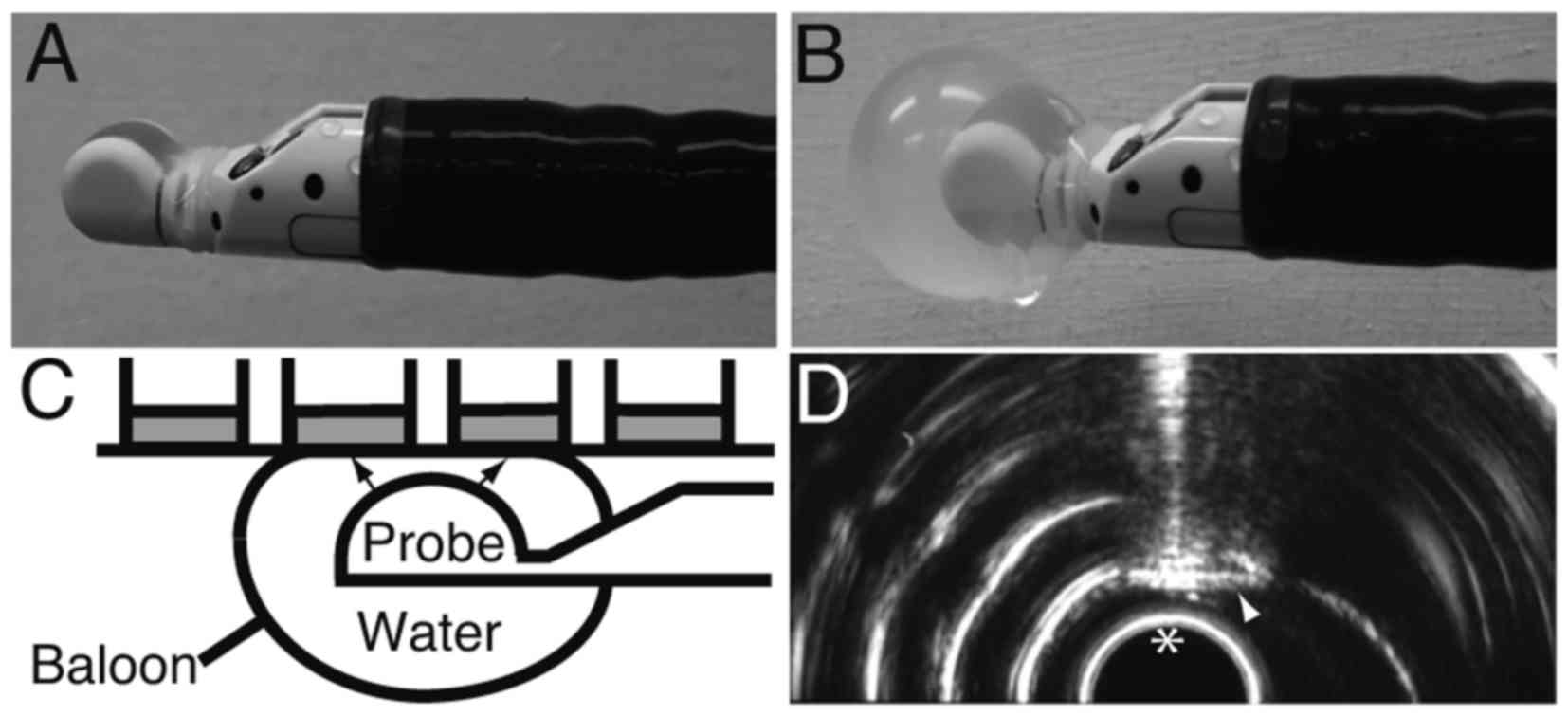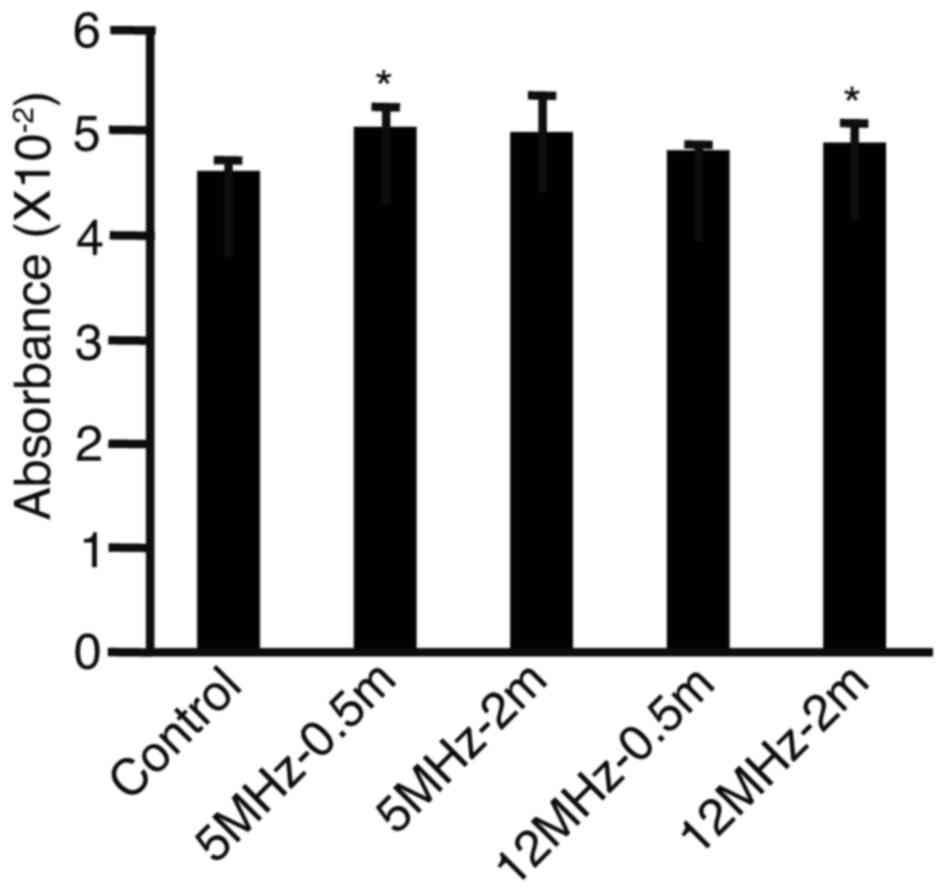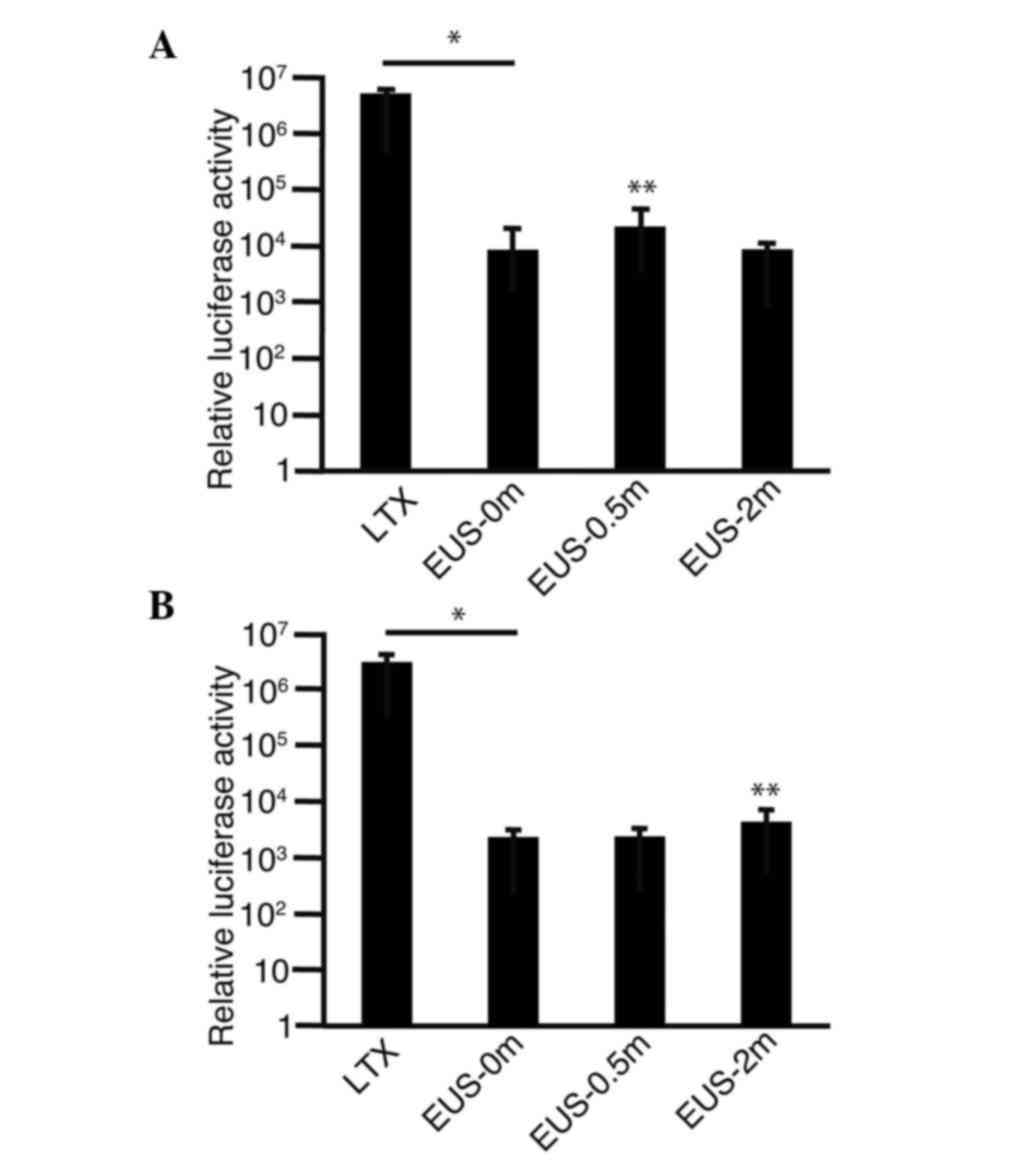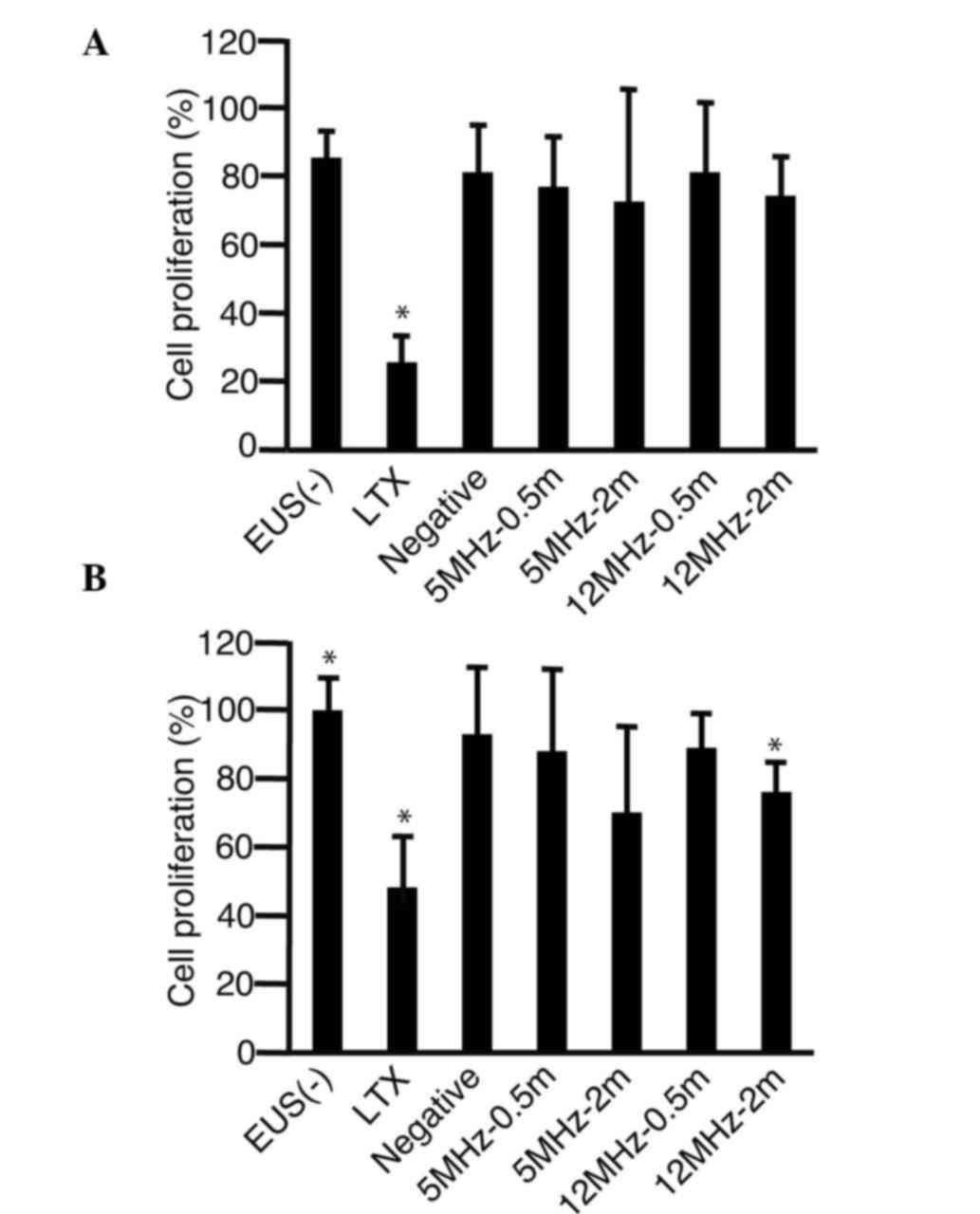|
1
|
Tanaka SS, Kojima Y, Yamaguchi YL,
Nishinakamura R and Tam PP: Impact of WNT signaling on tissue
lineage differentiation in the early mouse embryo. Dev Growth
Differ. 53:843–856. 2011. View Article : Google Scholar : PubMed/NCBI
|
|
2
|
MacDonald BT, Tamai K and He X:
Wnt/beta-catenin signaling: Components, mechanisms and diseases.
Dev Cell. 17:9–26. 2009. View Article : Google Scholar : PubMed/NCBI
|
|
3
|
Tomizawa M, Shinozaki F, Motoyoshi Y,
Sugiyama T, Yamamoto S and Ishige N: Gastric cancer cell
proliferation is suppressed by frizzled-2 short hairpin RNA. Int J
Oncol. 46:1018–1024. 2015.PubMed/NCBI
|
|
4
|
Feril LB Jr and Tachibana K: Use of
ultrasound in drug delivery systems: Emphasis on experimental
methodology and mechanisms. Int J Hyperthermia. 28:282–289. 2012.
View Article : Google Scholar : PubMed/NCBI
|
|
5
|
Fechheimer M, Boylan JF, Parker S, Sisken
JE, Patel GL and Zimmer SG: Transfection of mammalian cells with
plasmid DNA by scrape loading and sonication loading. Proc Natl
Acad Sci USA. 84:8463–8467. 1987. View Article : Google Scholar : PubMed/NCBI
|
|
6
|
Kim HJ, Greenleaf JF, Kinnick RR, Bronk JT
and Bolander ME: Ultrasound-mediated transfection of mammalian
cells. Hum Gene Ther. 7:1339–1346. 1996. View Article : Google Scholar : PubMed/NCBI
|
|
7
|
Tomizawa M, Ebara M, Saisho H, Sakiyama S
and Tagawa M: Irradiation with ultrasound of low output intensity
increased chemosensitivity of subcutaneous solid tumors to an
anti-cancer agent. Cancer Lett. 173:31–35. 2001. View Article : Google Scholar : PubMed/NCBI
|
|
8
|
O'Brien WD Jr: Ultrasound-biophysics
mechanisms. Prog Biophys Mol Biol. 93:212–255. 2007. View Article : Google Scholar : PubMed/NCBI
|
|
9
|
Newman CM and Bettinger T: Gene therapy
progress and prospects: Ultrasound for gene transfer. Gene Ther.
14:465–475. 2007. View Article : Google Scholar : PubMed/NCBI
|
|
10
|
Wang P, Li Y, Wang X, Guo L, Su X and Liu
Q: Membrane damage effect of continuous wave ultrasound on K562
human leukemia cells. J Ultrasound Med. 31:1977–1986. 2012.
View Article : Google Scholar : PubMed/NCBI
|
|
11
|
Okada K, Kudo N, Hassan MA, Kondo T and
Yamamoto K: Threshold curves obtained under various gaseous
conditions for free radical generation by burst ultrasound-Effects
of dissolved gas, microbubbles and gas transport from the air.
Ultrason Sonochem. 16:512–518. 2009. View Article : Google Scholar : PubMed/NCBI
|
|
12
|
Ebrahiminia A, Mokhtari-Dizaji M and
Toliyat T: Correlation between iodide dosimetry and terephthalic
acid dosimetry to evaluate the reactive radical production due to
the acoustic cavitation activity. Ultrason Sonochem. 20:366–372.
2013. View Article : Google Scholar : PubMed/NCBI
|
|
13
|
Qiu Y, Zhang C, Tu J and Zhang D:
Microbubble-induced sonoporation involved in ultrasound-mediated
DNA transfection in vitro at low acoustic pressures. J Biomech.
45:1339–1345. 2012. View Article : Google Scholar : PubMed/NCBI
|
|
14
|
Kudo N, Okada K and Yamamoto K:
Sonoporation by single-shot pulsed ultrasound with microbubbles
adjacent to cells. Biophys J. 96:4866–4876. 2009. View Article : Google Scholar : PubMed/NCBI
|
|
15
|
Miller DL and Quddus J: Sonoporation of
monolayer cells by diagnostic ultrasound activation of
contrast-agent gas bodies. Ultrasound Med Biol. 26:661–667. 2000.
View Article : Google Scholar : PubMed/NCBI
|
|
16
|
Tomizawa M, Shinozaki F, Sugiyama T,
Yamamoto S, Sueishi M and Yoshida T: Plasmid DNA introduced into
cultured cells with diagnostic ultrasound. Oncol Rep. 27:1360–1364.
2012.PubMed/NCBI
|
|
17
|
Tomizawa M, Shinozaki F, Sugiyama T,
Yamamoto S, Sueishi M and Yoshida T: Short interference RNA
introduced into cultured cells with diagnostic ultrasound. Oncol
Rep. 27:65–68. 2012.PubMed/NCBI
|
|
18
|
Tomizawa M, Shinozaki F, Hasegawa R, Fugo
K, Shirai Y, Ichiki N, Sugiyama T, Yamamoto S, Sueishi M and
Yoshida T: Screening ultrasonography is useful for the diagnosis of
gastric and colorectal cancer. Hepatogastroenterology. 60:517–521.
2013.PubMed/NCBI
|
|
19
|
El Abiad R and Gerke H: Gastric cancer:
Endoscopic diagnosis and staging. Surg Oncol Clin N Am. 21:1–19.
2012. View Article : Google Scholar : PubMed/NCBI
|
|
20
|
Kondo T and Yoshii G: Effect of intensity
of 1.2 MHz ultrasound on change in DNA synthesis of irradiated
mouse L cells. Ultrasound Med Biol. 11:113–119. 1985. View Article : Google Scholar : PubMed/NCBI
|
|
21
|
Tomizawa M, Shinozaki F, Motoyoshi Y,
Sugiyama T, Yamamoto S and Sueishi M: Sonoporation: Gene transfer
using ultrasound. World J Methodol. 3:39–44. 2013. View Article : Google Scholar : PubMed/NCBI
|
|
22
|
WFUMB Symposium on safety and
standardisation in medical ultrasound. Issues and recommendations
regarding thermal mechanisms for biological effects of ultrasound.
Hornbaek, denmark, 30 August-1. Ultrasound Med Biol. 18:731–810.
1992.PubMed/NCBI
|
|
23
|
Hassan MA, Buldakov MA, Ogawa R, Zhao QL,
Furusawa Y, Kudo N, Kondo T and Riesz P: Modulation control over
ultrasound-mediated gene delivery: Evaluating the importance of
standing waves. J Control Release. 141:70–76. 2010. View Article : Google Scholar : PubMed/NCBI
|
|
24
|
Kinoshita M and Hynynen K: Key factors
that affect sonoporation efficiency in in vitro settings: The
importance of standing wave in sonoporation. Biochem Biophys Res
Commun. 359:860–865. 2007. View Article : Google Scholar : PubMed/NCBI
|
|
25
|
Wang TS, Ding QQ, Guo RH, Shen H, Sun J,
Lu KH, You SH, Ge HM, Shu YQ and Liu P: Expression of livin in
gastric cancer and induction of apoptosis in SGC-7901 cells by
shRNA-mediated silencing of livin gene. Biomed Pharmacother.
64:333–338. 2010. View Article : Google Scholar : PubMed/NCBI
|
|
26
|
Yamaguchi K, Feril LB Jr, Tachibana K,
Takahashi A, Matsuo M, Endo H, Harada Y and Nakayama J:
Ultrasound-mediated interferon β gene transfection inhibits growth
of malignant melanoma. Biochem Biophys Res Commun. 411:137–142.
2011. View Article : Google Scholar : PubMed/NCBI
|


















